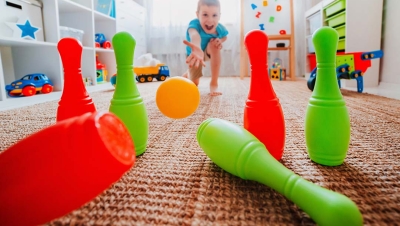An increase in phone usage in children is preventing them from many health benefits of playing outside.
When I was a kid, I had to alleviate my boredom with the great outdoors. I would spend countless hours in my backyard running, swinging, and inventing games in my head. I fondly remember how I would challenge myself to get up to my tree house without using the rope ladder, or create obstacle courses around my yard and try to complete them as fast as possible. The playing I did as a kid not only provided me with amazing memories but with good health and creativity. Now, because of the rise of phones, fewer and fewer children are experiencing the joys of playing outdoors.
As technology is becoming more prevalent in today’s society, children are being exposed to it more often and at younger ages. It is not unusual nowadays for kids to have their own personal smartphone. These phones can be used to text, access the internet, stream videos, and use social media applications, among many other uses. Because phones have so many enjoyable uses, and due to their portability, it can be hard to control screen time.
What preteen would choose to spend time outside over playing video games on their phone? The fact of the matter is that phones are addictive and when children are given unfettered access to them, it can be almost impossible for them to self-monitor and balance their screen time. We can’t blame them, but we must recognize the impact that it’s having on them.
Science has emphasized time and time again the vast array of benefits of regular exercise. The Centers for Disease Control explains that exercise helps decrease the risks of numerous physical diseases, including many types of cancer and heart disease. Specifically in children, it improves thinking and cognition. Exercise also has a huge impact on mental health, as it reduces anxiety and stress, increases motivation, and improves sleep. Furthermore, it increases life expectancy.
Playing is such an important aspect of exercise, especially for younger children. As a karate coach, having my students play games in class is one of the most effective ways I get them to practice and get exercise. Kids are much more likely to get moving if it’s playful, rather than it being marketed as plain old exercise. Play also has benefits for children that regular exercise doesn’t. An article from NI Direct explains that play “improves the cognitive, physical, social, and emotional well-being of children and young people.” In addition, playing teaches kids many important skills such as confidence, communication, independence, and a variety of different social skills.
Screen time doesn’t just keep kids away from the benefits of exercise, it also comes with its own array of negative health effects. Phone use has been linked with many mental health issues, most commonly depression and anxiety. In addition to this, an article published by the journal Child Development explains that smartphones have a negative impact on children in particular. Specifically, the use of phones can lead to neurological diseases and cognition, sleep, or behavioral problems in kids.
Most would say that we are currently in a mental health epidemic. In fact, CNN recently published that 90% of US adults would agree that there is a mental health crisis in the country. The rates of mental disorders are rising, especially in children and teens. It is crucial that we start to take seriously the immense negative impact that kids using phones has on their health.
Children need to be encouraged to get outside and play in order to get the regular exercise that good health requires and the many benefits of play. Furthermore, they must be taught how to balance their screen time to ensure that other activities are still enjoyed.










